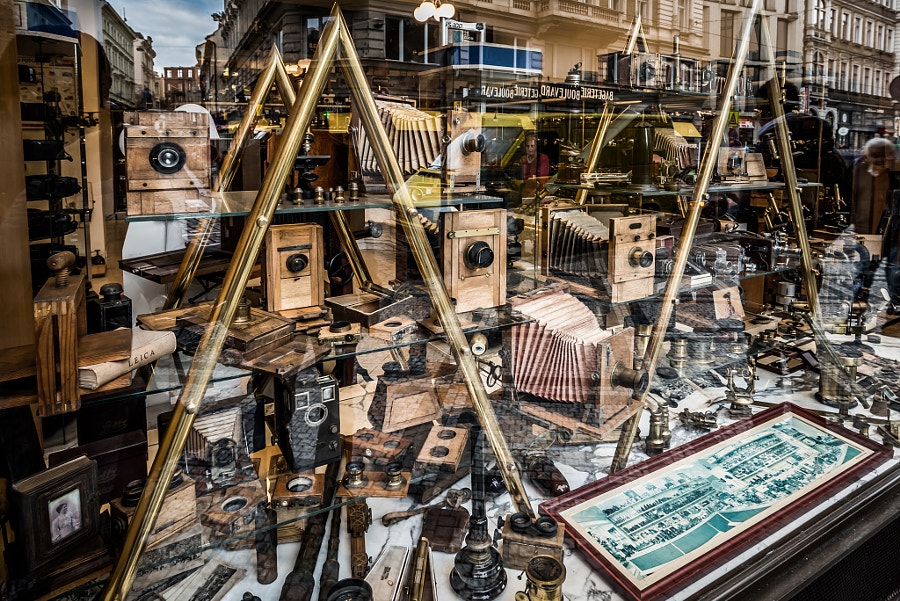How to Find Hidden Gems in the Antiques Market: A Guide for Beginners…

This page contains ebay affiliate links. I may earn a commission for qualified purchases at no additional cost to you. These links are marked (AD).
If you love history, art ↗ (AD), and culture, you might be interested in exploring the world of antiques. Antiques ↗ (AD) are objects that are at least 100 years old and have some historical or aesthetic value. They can range from furniture ↗ (AD) and paintings to jewellery ↗ (AD) and ceramics. Antiques can be a great way to decorate your home, learn about the past, and even make some money.
But how do you find these rare treasures in the antiques market? Where do you start? What do you look for? How do you avoid scams and fakes? In this article, we will give you some tips and tricks on how to become a successful antique hunter.
Disclaimer: This article is for informational purposes only and does not constitute professional advice. Always consult an expert before buying or selling any antiques.
Do your research
The first step to finding hidden gems in the antiques market is to do your research. You need to learn about the history, styles, and values of different types of antiques. You also need to know how to identify and date them, as well as how to spot signs of damage, restoration, or forgery.
There are many sources of information that you can use, such as books, magazines, websites, blogs, podcasts, and online courses. You can also visit museums, galleries, auctions, and fairs to see real examples of antiques and learn from experts. The more you know, the more confident and savvy you will be in the market.
2. Know where to look
The next step is to know where to look for antiques. There are many places where you can find them, such as:
- Antique shops: These are specialised stores that sell antiques of various kinds. They usually have knowledgeable staff who can help you with your queries and purchases. However, they may also charge higher prices than other venues.
- Antique fairs: These are events where many dealers and collectors gather to buy and sell antiques. They usually offer a wide range of items and prices, as well as opportunities to negotiate and bargain. However, they may also be crowded and overwhelming for beginners.
- Auctions: These are events where antiques are sold to the highest bidder. They can be exciting and thrilling, as well as a chance to find rare and valuable items. However, they may also be risky and stressful, as you have to compete with other buyers and pay fees and commissions.
- Online platforms: These are websites or apps that allow you to buy and sell antiques online. They can be convenient and accessible, as well as a way to find items from different countries and regions. However, they may also be unreliable and fraudulent, as you cannot inspect the items in person or verify their authenticity.
- Flea markets: These are outdoor markets where people sell second-hand goods of various kinds. They can be fun and cheap, as well as a source of unexpected discoveries. However, they may also be chaotic and dirty, as well as full of junk and fakes.
Each place has its pros and cons, so you need to choose the one that suits your preferences, budget, and goals. You may also want to try different places at different times to increase your chances of finding hidden gems.
3. Be prepared
The third step is to be prepared when you go hunting for antiques. You need to have some tools and skills that will help you in your quest, such as:
- A budget: You need to set a limit on how much you are willing to spend on antiques. This will help you avoid overspending or regretting your purchases later.
- A list: You need to have a list of what kind of antiques you are looking for, such as categories, periods, makers, or themes. This will help you focus your search and avoid distractions or impulse buys.
- A magnifying glass ↗ (AD): You need to have a magnifying glass that will help you examine the details of the antiques closely. This will help you spot any flaws or features that may affect their value or authenticity.
- A tape measure: You need to have a tape measure that will help you measure the size of the antiques accurately. This will help you avoid buying items that are too big or too small for your space or needs.
- A camera ↗ (AD): You need to have a camera that will help you take pictures of the antiques that interest you. This will help you remember them later or compare them with other items or sources.
- A notebook: You need to have a notebook that will help you record any information or observations about the antiques that interest you. This will help you keep track of them later or research them further.
- A friend: You need to have a friend who can accompany you on your antique hunting trips. This will help you have fun and share opinions, as well as get a second opinion or support if needed.
4. Be Patient
The fourth and final step is to be patient when you hunt for antiques. You need to understand that finding hidden gems in the antiques market is not easy or fast. It takes time, effort, and luck to discover the perfect piece for you. You may have to visit many places, see many items, and face many challenges before you find what you are looking for.
But don’t give up or get discouraged. Remember that the journey is part of the joy of antique hunting. Every item you see, every person you meet, and every experience you have can teach you something new and enrich your knowledge and appreciation of antiques. And when you do find that hidden gem, you will feel a sense of achievement and satisfaction that is priceless.
So, are you ready to start your adventure in the antiques market? Follow these steps and you will be on your way to finding hidden gems that will add beauty, history, and value to your life.

